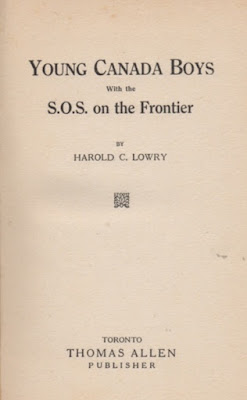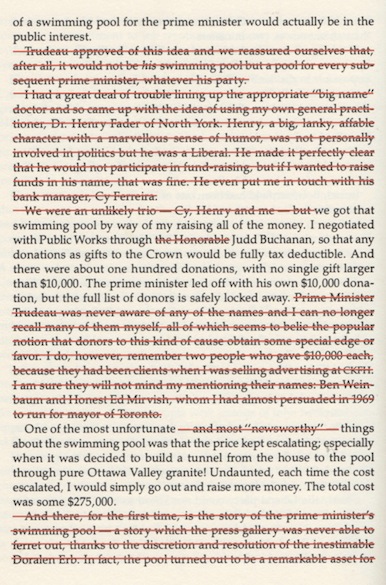Rx for Murder
Jane Layhew
Philadelphia: Lippincott, 1946
I've read
Rx for Murder, but I'm not sure about anyone else; certainly the person responsible for this newspaper advertisement hadn't:
 |
| The Gazette, 30 August 1946 |
Nor D.S.S. Mackenzie, who reviewed the book for Montreal's
Gazette (30 August 1946):
Ditto J.W. Hurlow, who wrote this in the
Ottawa Citizen (8 February 1947):
And most definitely not the person who wrote the book's dust jacket copy:
I know this because the heroine's name is Molly, not "Mollie".
D.S.S. Mackenzie is right about one thing:
Rx for Murder opens in a hospital – and much as described. Nurse Molly Thompson is on duty at Vancouver's Hamilton Memorial when arrives accident victim Mrs Mabel Landover. The poor woman, a widow, was walking along a city street when she was struck by a car. There's no crime here, rather Mrs Landover, lost in troubled thoughts, had wandered into traffic.
Perfectly understandable.
As we soon learn, lovely Landover daughter Clara is missing, possibly abducted. She's found soon enough, locked up in an apartment in Clifton (read: Abbotsford). The body of a man named Graves lies on the other side of the door. For no good reason, pretty Clara is suspected of murder… and for no good reason, Mrs Landover offers Molly's fiancé, chemistry student Larry Stone, $1000 to prove her daughter's innocence.
Larry stumbles about – sometimes with Molly, sometimes without – in an effort to figure out just what the hell happened. Lawyer pal Ronald Raft helps out. The trio benefits from remarkably talkative witnesses and absurdly detailed newspaper stories. Good thing too, because Mrs Landover is of no help whatsoever. Sure, she's concerned for her daughter, but that doesn't mean she's willing to share her suspicions about the murdered man. Larry's left in the dark… again, for no good reason. Or is it simply that Jane Layhew, a first-time novelist, believed she could create suspense through inexplicable obstruction.
Molly and Larry are novice sleuths under the influence of a novice mystery writer writing madly off in all directions. With a few exceptions, progress takes place off-stage, and is reported when next the betrothed meet. In this passage, Larry informs Molly that Clara was indeed abducted:
Publisher Lippincott positioned
Rx for Murder as a mixture of homicide and humour. Return to the jacket copy above and you'll see "Mollie [
sic] and Larry are as appealing, keen-witted and wisecracking a pair of detective youngsters as ever bubbled through the pages of mystery fiction. Readers will chuckle with them and share their adventures with absorbed interest."
There are no chuckles to be had in
Rx for Murder. Molly and Larry's idea of humour rests solely on stilted speech and caricature. The combination is never more tiresome than here:
"Come my sweet, at last we sleep," he carolled.
"Oh, sweetheart mine, speak lower, I entreat," Molly responded tunefully.
"There's none to hear my words, my own, my sweet," he finished the song. "None but Ronald, who has ears but hears not. We, the workers of the world, have many great deeds to do tomorrow while you sleep. Let us to our downy nests.'
"Very well" Molly said, rising, "though to speak of my humble hospital cot as a downy nest is a euphemism of the most optimistic. Only such an expert slumberer as myself could even achieve a recumbent posture upon it."
"Ah, well," Larry consoled her, "some day – after we're married, of course – you will share my bed, and I do insist on comfort. You must just be patient until that happy time."
Mine eyes fairly glazed ov'r, but not so much that I didst not witness this:
"You alarm me," Molly murmured. "Are you addicted to brawling?"
"Can't take it, huh? Life in the raw doesn't appeal to you? Want everything to be a bed of roses, I suppose. Well, I'm a hard-drinkin', hard-fightin' man, Miss Thompson," Larry intoned, "and my wumman will just have to get used to being beat up a few times a month."
"Ah, the price of romance," said Molly tenderly. "I'll learn to be brave; honest I will."
"Well, I won't put you to the test right now."
This is Molly's reaction upon seeing the bruised and beaten face of her fiancé. Until that moment she had no idea that straight-laced, presumably straight-A student Larry had been roughed up. Her lack of surprise or concern might seem suspicious, but don't read anything into it, the author's just going for yucks.
In a strange way, I began to feel sorry for Larry. All that running around with such little payoff – and a beating to boot – for no other reason than his creator has no idea what she's doing. In the eighteenth chapter, poor Larry encounters a kid named Wilson, but has no idea why. Our amateur sleuth can't help but compare himself with others:
Who of all his favorite characters would not by now have a complete case against someone? by [sic] now they would be working only for the collection of incontrovertible evidence; their theories would be such that a casual intruder like Wilson would be fitted into his place without a ripple. In fact, they would probably have been expecting his advent. Larry sighed with wholehearted dissatisfaction.
I too sighed with wholehearted dissatisfaction. Yet, I persevered through the remaining eighty-one pages.
As I say, I've read this novel.
The most regrettable passage:
"I'm disappointed in Mr. Pearson," Molly said ruefully. "He seemed so friendly and pleasant, I had no idea he had a nigger in the woodpile."
A real mystery: The 30 August 1946
Gazette reports that Mrs. Layhew is at work on another "blood and thunder".
Rx for Murder is her only book, though she did publish something titled "Prescription for Murder" in the 22 March 1947 edition of the
Standard. I presume it's a bowdlerized version, but can't say for certain.
Object: A 252-page hardcover, published as part of Lippincott's Main Line Mystery series. The paper is a bit cheap, but the binding is good. I bought my copy online from a Shropshire bookseller this past summer. Price: US$22.50.
The uncredited dust jacket image depicts a scene that does not feature in the novel.
Access: Six copies are currently listed for sale online. The cheapest jacketless copy is listed at US$7.50. The cheapest with jacket costs US$30.00. No one is asking more than US$48.50.
The novel never enjoyed a paperback edition – not as
Rx for Murder anyway. In 1950, a French translation was published in paper by Éditions des deux mondes under the title
Meurtres aux rayons X? Note the question mark. X-rays are mentioned only fleetingly, and there isn't so much as a suggestion that they played a part in the murder.
Le Meurtre de Roger Ackroyd? would have been just as appropriate a title.
Toronto Public Library, the University of Toronto and the University of British Columbia have copies. You won't find it at Library and Archives, but you will find
Meurtres aux rayons X?
Related post:























































